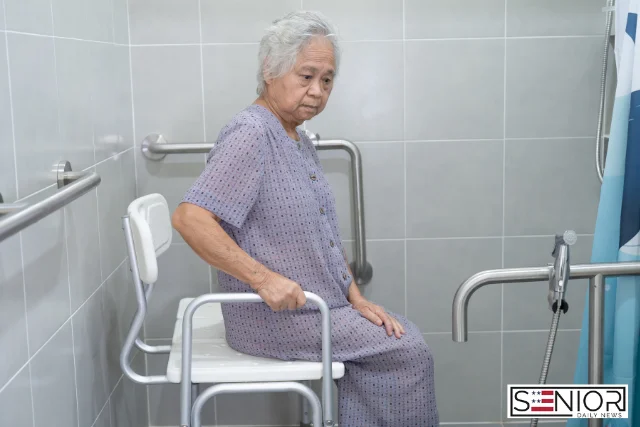Understanding What You Get with Monthly Retirement Community Fees

Moving into a retirement community is a major life decision—one filled with excitement, careful planning, and questions about finances. One of the most common concerns seniors and their families have is: What exactly am I paying for each month?
The phrase “monthly retirement community fees” can sound vague or even overwhelming at first glance. But when you break it down, these fees often include a wide range of services, amenities, and support systems designed to improve quality of life. From home maintenance to dining options and health care access, the value you receive goes far beyond just a place to live.
In this article, we’ll explore what’s typically included in monthly fees at a retirement community, how costs vary, and what to look for when choosing the right community for your lifestyle and budget.
What Is a Retirement Community?
A retirement community is a residential housing complex or neighborhood designed specifically for older adults, usually aged 55 and up. These communities come in various forms, such as independent living, assisted living, or continuing care retirement communities (CCRCs), offering different levels of care and support.
What they all have in common is a focus on lifestyle, safety, convenience, and social engagement. The monthly fee is your all-in-one ticket to accessing that lifestyle.
What Monthly Retirement Community Fees Typically Cover
Monthly fees can range widely—from about $1,500 to over $6,000—depending on location, housing type, and the level of care. So, what do these fees usually include?
1. Housing and Utilities
At the core of your monthly fee is your residence. Whether it’s a private apartment, a townhouse, or a cozy cottage, this fee covers:
- Rent or mortgage equivalent
- Electricity, water, heating/cooling
- Basic cable or Wi-Fi (in many communities)
- Trash and recycling services
The convenience of not managing multiple utility bills each month is a big relief for many residents.
2. Maintenance and Repairs
Gone are the days of fixing a leaky faucet or worrying about mowing the lawn. Your monthly fee typically includes:
- Interior and exterior maintenance
- Appliance repairs or replacements
- Lawn care and landscaping
- Snow removal and pest control
In essence, you’re gaining peace of mind by letting someone else handle the day-to-day upkeep of your home and surroundings.
3. Housekeeping and Laundry Services
Many retirement communities offer light housekeeping services included in the monthly fee. This often includes:
- Weekly or bi-weekly cleaning
- Linen changes
- Laundry services (or access to shared laundry facilities)
Some communities may also offer à la carte upgrades for more frequent service.
4. Dining Options
One of the most valued perks is meal service. Most communities offer at least one meal per day as part of the monthly fee, while others include three meals a day.
Dining services often include:
- Restaurant-style dining rooms
- Special dietary accommodations
- Snacks and beverages throughout the day
- Social events like holiday dinners or themed meals
Eating well without cooking every day? That’s a win.
5. Transportation Services
Getting to doctor’s appointments, shopping centers, or local events can be tricky without reliable transportation. Fortunately, most retirement communities provide:
- Scheduled shuttle services
- On-demand rides for errands or appointments
- Group outings and recreational trips
This not only adds convenience but also promotes independence and freedom.
6. Security and Emergency Response
Safety is a top priority. Your monthly fee may also include:
- 24/7 security personnel
- Gated access or secured entrances
- Emergency call systems in residences
- Regular wellness checks
These features provide peace of mind for residents and their families alike.
7. Health and Wellness Programs
While not all services are medical in nature, many communities prioritize wellness with features such as:
- On-site fitness centers
- Group exercise classes like yoga or water aerobics
- Nutrition counseling
- Access to visiting medical professionals or clinics
In assisted living or CCRCs, higher levels of health care may be bundled into the fee.
8. Social and Recreational Activities
A good retirement community isn’t just a place to live—it’s a place to thrive. Your monthly fee likely covers access to:
- Hobby clubs (like gardening, knitting, or art)
- Group outings (movies, concerts, museums)
- Educational workshops and lectures
- Game nights, movie nights, and holiday parties
These activities foster social connections, prevent isolation, and make daily life more fun.
9. Access to On-Site Amenities
Many communities are equipped with on-site perks that enhance lifestyle and leisure. Common amenities may include:
- Swimming pools or hot tubs
- Beauty salons or barbershops
- Libraries or reading rooms
- Craft rooms or music spaces
- Walking trails or gardens
The variety of amenities can differ, but they’re designed to enrich your lifestyle without leaving home.
Additional Costs Not Always Included
While monthly fees cover a lot, it’s important to understand what’s not included. Some services may incur extra charges, such as:
- Personal care assistance (e.g., dressing, bathing)
- Medication management
- Private duty nursing or therapy services
- Off-site excursions
- Specialty dining or guest meals
- Second-person occupancy fees (if a spouse or partner lives with you)
Always ask for a breakdown of what’s included and what is billed separately when evaluating a retirement community.
Factors That Influence Monthly Retirement Community Fees
You might notice that costs vary dramatically from one community to another. Here’s why:
Location
Just like real estate, geography affects price. Retirement communities in urban areas or coastal states tend to have higher fees than those in rural or suburban settings.
Type of Community
- Independent Living: Typically lower fees, as residents require less support.
- Assisted Living: Mid-range fees that include personal care and daily support.
- CCRCs (Continuing Care Retirement Communities): Higher fees but include tiered care levels (independent, assisted, skilled nursing) in one package.
Size and Style of Residence
Larger apartments or standalone homes will have higher fees than studios or shared accommodations.
Level of Care and Services
The more comprehensive the service package, the higher the monthly fee. Tailoring your package to your specific needs helps manage costs.
How to Choose the Right Retirement Community Based on Fees
Selecting the right retirement community is about more than just price. Consider the following when evaluating options:
- Request a Fee Breakdown: Ask for an itemized list so you can compare communities apples-to-apples.
- Consider Your Lifestyle: Don’t pay for amenities you won’t use. If you’re active and independent, you might not need full-service assisted living yet.
- Ask About Fee Increases: Inquire how often fees go up and by how much.
- Understand the Contract: Some communities offer rental contracts, while others require entrance fees or buy-in models. Make sure you understand what’s refundable and what’s not.
- Tour the Facility: See the amenities, meet the staff, and speak with current residents.
The right choice will balance affordability, lifestyle preferences, and long-term health care planning.
FAQs About Monthly Retirement Community Fees
Q: Are all meals included in monthly fees?
Not always. Some communities include one or two meals daily, while others offer full dining plans. Additional meals may be available à la carte.
Q: Do monthly fees cover medical care?
Basic wellness programs are often included, but advanced care like nursing or therapy may cost extra—unless you’re in a continuing care retirement community.
Q: Can I customize my service package?
Yes. Many communities offer tiered packages or add-on services so you only pay for what you use.
Q: Are monthly fees tax-deductible?
Sometimes. In certain cases, portions of retirement community fees that cover medical or health-related services may be deductible. Consult a tax advisor.
Q: What happens if I run out of money?
Some non-profit communities have benevolence funds or policies in place to support residents in financial distress, but this varies. It’s important to ask before moving in.
Q: Is it more affordable than staying at home?
When you factor in home maintenance, property taxes, utilities, food, and transportation, a retirement community can be cost-effective—especially with the added health and lifestyle benefits.
Image Source: Canva






